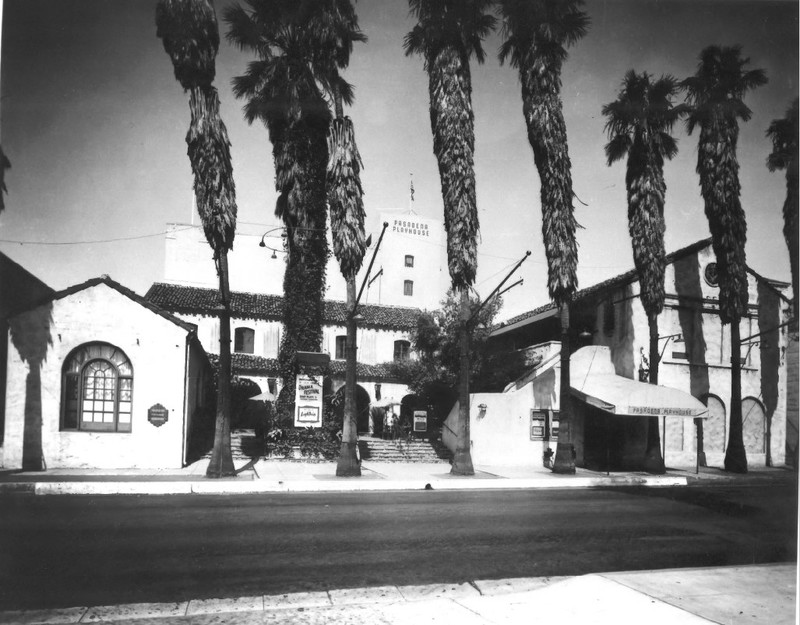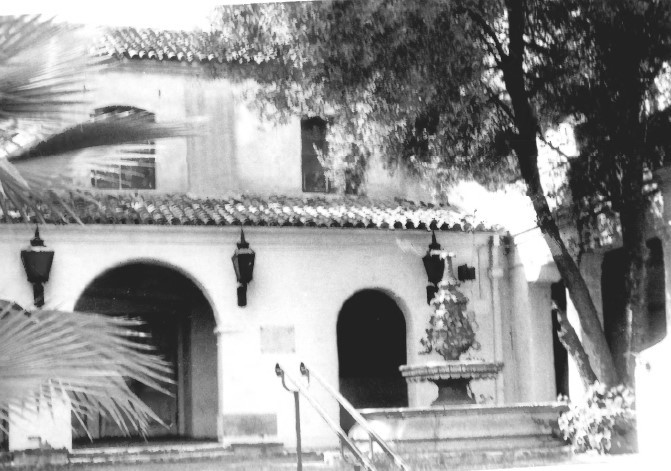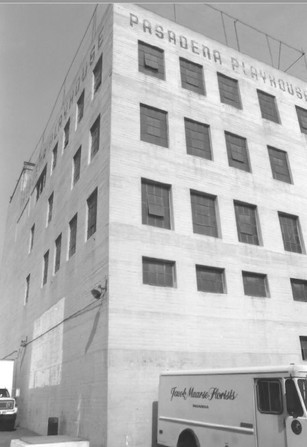Pasadena Playhouse
Introduction
Text-to-speech Audio
The Pasadena Playhouse was constructed as a community theater in 1925. The theater began in 1917 after Gilmor Brown established the Pasadena Community Players. Brown envisioned the players as an outlet for recreational and artistic interests of the community instead of a professional troupe. The players outgrew their location and raised funds to build the current theater. In 1937, the Pasadena Playhouse was deemed California's state theater. A School of Theater Arts was established here in 1929. The growing school expanded from the playhouse building in 1936 into part of a newly built six-story concrete addition connected to the west (rear) side of the playhouse (the Fannie E. Morrison Annex). Hundreds of Hollywood stars, directors, and producers graduated from the school. In 1975, the Pasadena Playhouse became one of the first buildings in Pasadena to be added to the National Register of Historic Places. It continues to offer live performances; the school closed in the 1960s.
Images
Pasadena Playhouse east front circa 1936; theater & north & south wings adjacent to patio; annex to rear (J. Allan Hawkins)

Fountain on stone patio near front entrance to Pasadena Playhouse in 1975 photo (Pasadena Playhouse Association)

Southwest corner of 1936 annex; fence on rooftop deck - former cafeteria seating area (Marsh 1985)

1930s poster on upcoming performances at Pasadena Playhouse with tickets costing 55 or 25 cents

Backstory and Context
Text-to-speech Audio
Gilmor Brown arrived in Pasadena in 1916 as manager and an actor for the Savoy Stock Company; in the following year, he founded the Pasadena Community Players. Their first production was a group of one-act plays that opened on November 20th, 1917; one performer was Martha Graham (before she became a famous dancer). Elmer Grey designed the Pasadena Playhouse building that was constructed in 1925, after the community raised the funds over five years. Several smaller theaters are encompassed within the stuuco-covered concrete building and its two original wings of one or two stories. The Mainstage Theater was the site of most of the public performances and could seat 700; the stage was about 72 by 36 feet, and the space was said to have perfect acoustics. Several smaller venues were the Patio, West Balcony, and East Balcony Theaters. The grand opening was on May 19th, 1925, featuring the world premiere of "The Amethyst," a play by Victor Mape.
A theatrical arts school began at the Pasadena Playhouse in 1929. Seventeen students made up the graduating class of the Pasadena Community Playhouse school of the theater in June 1932. The graduates heard from Ernest A. Batchelder, the president of the Pasadena Community Playhouse Association. After the ceremony, attended by hundreds, El Molino Ave. was closed between Green and Colorado Streets for the annual street dance and entertainment. In 1936, the School of Theater Arts expanded into a newly built six-story, reinforced concrete addition adjacent to (west and northwest of) the Playhouse building. The high-rise addition was known as the Fannie E. Morrison Annex in honor of a major financial donor. Pasadena architect Cyril Bennett designed the annex. The first two floors held spaces for scenery workshops, with technical functions of the main stage controlled from a mezzanine. The upper floors of the annex contained classrooms, rehearsal rooms, and the school's cafeteria; the third floor held offices for the theater's director and staff plus furniture storage. Dressing and locker rooms were in the annex basement. The school also was certified in 1936 to bestow bachelor's and master's degrees in fine arts. In 1937, the Pasadena Playhouse was deemed California's state theater. A 1953 magazine article called the theater school a "Prep School for the Stars." Scores of Hollywood stars, directors, and producers have been graduates of the school, including Robert Young, Raymond Burr, Sally Struthers, and Dustin Hoffman. Hundreds more have performed at the Pasadena Playhouse. The enrollment was about 250 dramatic arts theater students in 1960; many lived in nearby dormitories operated by the playhouse. The school was disbanded in 1966 after the I.R.S. charged them with not paying taxes.
In 1937, the Pasadena Playhouse became the first theater in the U.S. to have staged all 37 of William Shakespeare's plays; it also received an honorary designation from the State of California as the state theater. The word "community" was dropped from the name in 1937, and the Pasadena Playhouse Association was formed. The quasi-amateur status changed in 1942 when a contract was signed, making the group professional and the location a union theater. By late 1960, the Pasadena Playhouse had been the location of more than 3,000 productions, including 125 world premieres; by the mid-1970s, American premieres held here numbered close to 500, including many plays from overseas. The Pasadena Playhouse continues to offer live performances in its Tony Award-winning theater.
Sources
Anonymous. "17 Drama Students Graduate." The Pasadena Post (Pasadena) June 25th, 1930. 5-5.
Anonymous. "Pasadena Playhouse School Finds Many Outlets for Talent." Los Angeles Times (Los Angeles) August 30th, 1942. 60-60.
Ebright, Peggy S. Marsh, Diann. NRHP nomination of Pasadena Playhouse, Pasadena, California. National Register. Washington, DC. National Park Service, 1975, updated 1985.
Pam, Jerry. "Pasadena Playhouse Anniversary Recalls Renown Prestige." Valley Times (North Hollywood) December 19th, 1960. 9-9.
National Park Service (NPS): https://npgallery.nps.gov/AssetDetail/NRIS/75000435
NPS: https://npgallery.nps.gov/AssetDetail/NRIS/75000435
NPS: https://npgallery.nps.gov/AssetDetail/NRIS/75000435
Federal Theatre Project Collection, Library of Congress: https://www.loc.gov/item/musihas.200217440/
